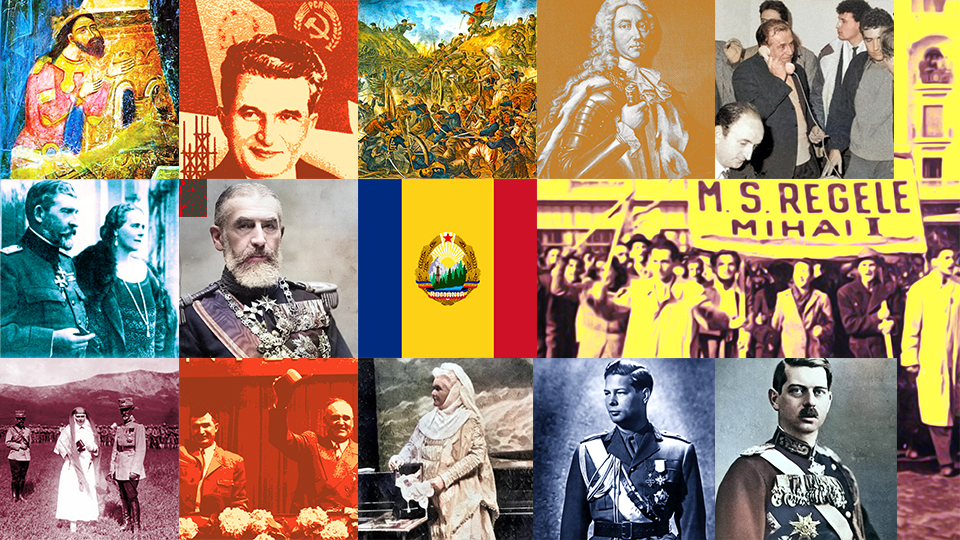Romanian news and current affairs
Actualitatea românească - Romanian news and current affairs show was a landmark for Radio Free Europe's listeners

Steliu Lambru, 02.12.2019, 14:01
Starting in the 1950s, Radio Free Europe together with the Voice of America, the BBC, Radio France and Deutsche Welle were synonymous with the free press in the Romanian language. Especially Radio Free Europe was the most vehement critic of the Communist regime led by Nicolae Ceaușescu. Two top journalists of the time, Noel Bernard, the director of the Romanian Service of Radio Free Europe, and Mircea Carp, who gave a new and more dynamic format to the station’s programs, were the ones who ushered in a more aggressive attitude of Radio Free Europe against the Communist regime.
Mircea Carp had previously worked for the Voice of America and he adapted Radio Free Europe’s editorial content to fit the American model, with short reports of 4 up to 6 minutes, with more topics and compelling shows that were to become the brand for the entire station. The shows made after the American model were Political Program, aired daily from 6.10 p.m. to 7 p.m. and especially Actualitatea românească – Romanian news and current affairs and From the Communist world, broadcast between 7.10 p.m. and 8 p.m.
In 1977, journalist Neculai Constantin Munteanu was allowed to immigrate to western Germany after he had shown solidarity with writer Paul Goma’s action of denouncing the human rights violations by the Communist regime in Bucharest. Munteanu had been a film critic at the Cinema movie magazine and he would join the team working for the show Romanian news and current affairs at a certain moment, as he recollected in an interview to the Center of Oral History of the Romanian Radio Broadcasting Corporation in 1999.
Neculai Constantin Munteanu: “I was in the office of the tenured producer of the show Romanian news and current affairs, Emil Georgescu, who, at the time, was in the US for 2 months, for an English language course. I had been brought there for that very post. I was shown a big table with several piles of Romanian newspapers, almost all the dailies issued in Romania and part of the weekly newspapers. I began reading; I had been reading the daily Scânteia since I was in Frankfurt, of course as long as I could afford it. I was craving to read these press articles and for 3 days I devoured the newspapers, and after another 3 days I wrote a commentary based on what I had read and on the information I had. This happened on 23rd and 24th of May 1980, and I did not stop doing that until the end of 1994, when I left of my own free will.”
His media experience helped Munteanu in his new job. The success of the show Romanian news and current affairs was due to the entire team, the new comers being well integrated. Neculai Constantin Munteanu has more: “After a trial period of employment of 2 months, the producer of the show Emil Georgescu returned from the US. He was a very good TV journalist, although he had not studied journalism. He had studied law, he was good barrister accustomed to pleading in court, he had also worked as a lawyer, he felt comfortable at the microphone and he knew a lot of things. He also had many connections and knew how things worked especially in relation to the generalized corruption of the Communist system. His greatest skill was that he could say Good night! giving the impression that Communism was also to blame for that, and this was thanks to his experience of working in a radio station, an experience which he had improved at Radio Free Europe. He had a great talent and very good sources of information. I had a good relation with him. He took back his post of anchor, moderator and producer of the show and I was given the position of commentator or reporter. Every day I was supposed to write an article of about 8 minutes, about 4 pages typed on the typewriter. On Fridays, the station had a cultural show presented by Emil Georgescu which was made from Paris.”
The huge success of the show Romanian news and current affairs consisted in the accuracy of the information presented. Neculai Constantin Munteanu will next tell us some of the secrets of this show: “We started our day, at least those working for the show Romanian news and current affairs, reading everything that had been gathered overnight or in the past 24 hours from the big news agencies. The materials were provided by a central service, and we also had the most important articles from the German, European and American newspapers. For the Romanian news and current affairs show, the main source of information was Radio Bucharest; we knew everything that was presented in the news bulletins. Furthermore, we had the news bulletins of Agerpres, the Romanian news agency, in Romanian and English. One may ask how we could trust materials and information from Romania given that they were propaganda materials. It was propaganda indeed, but that was the starting point: Ceausescu’s visits, the officials he received, their speeches, etc. In the bulk of the daily news, when reading between the lines, you could find enough information about the real situation, actually. For instance, if they insisted on the need to gather the crop, we knew that the crop had not actually been gathered, that was easy to infer from the text of the news. After reading these pieces of information we had to compile a draft newsreel. The show had 30 minutes, so it had about 3 commentaries of 8 minutes, and in the rest of the slot we could insert other pieces of news and info.”
The Romanian news and current affairs show remained a landmark for the Radio Free Europe listeners of those times. It was actually the victory of truth over injustice and lie.






























